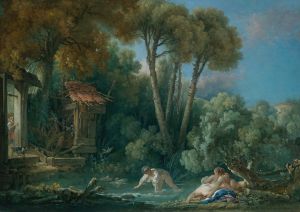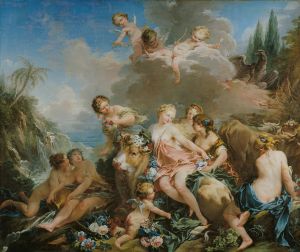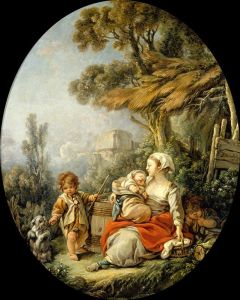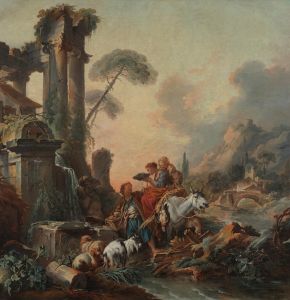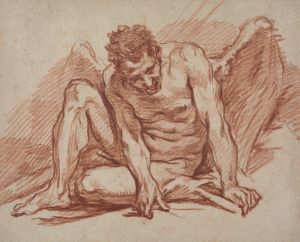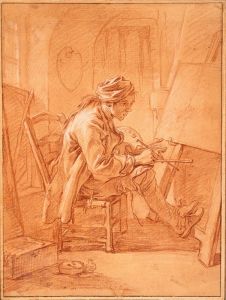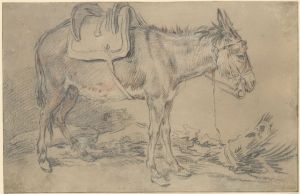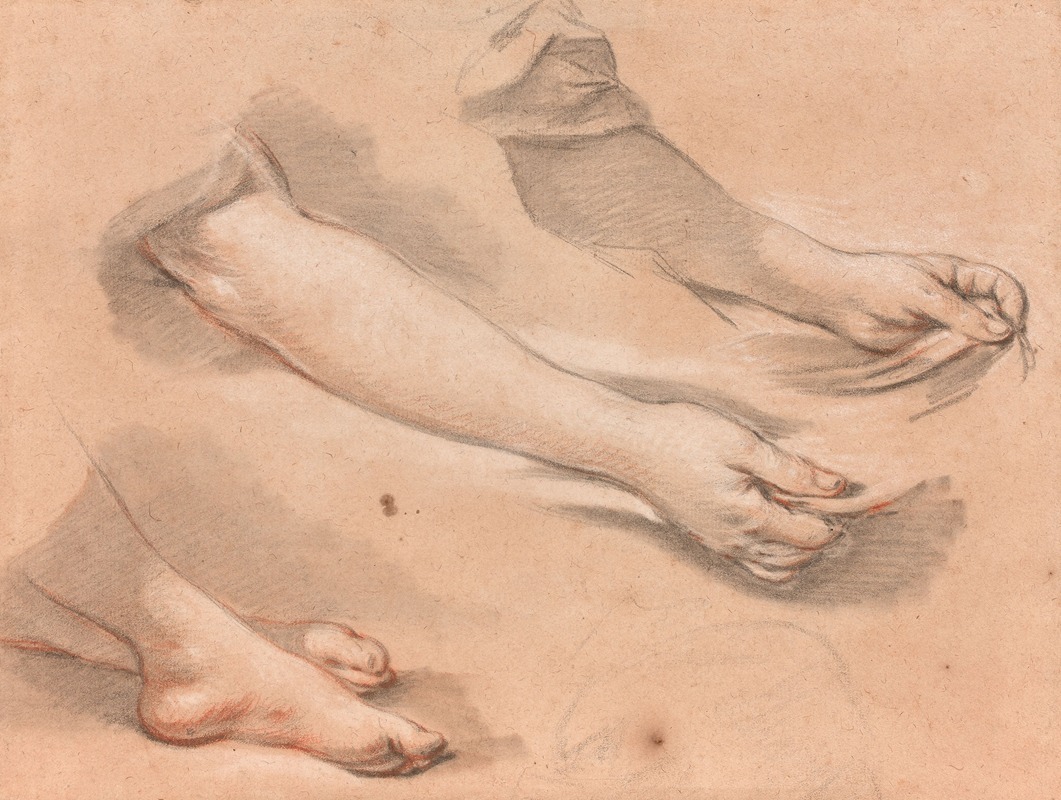
Bras tenant un tissu et deux pieds croisés, étude pour ‘La Lumière du monde’
A hand-painted replica of François Boucher’s masterpiece Bras tenant un tissu et deux pieds croisés, étude pour ‘La Lumière du monde’, meticulously crafted by professional artists to capture the true essence of the original. Each piece is created with museum-quality canvas and rare mineral pigments, carefully painted by experienced artists with delicate brushstrokes and rich, layered colors to perfectly recreate the texture of the original artwork. Unlike machine-printed reproductions, this hand-painted version brings the painting to life, infused with the artist’s emotions and skill in every stroke. Whether for personal collection or home decoration, it instantly elevates the artistic atmosphere of any space.
François Boucher, a prominent French painter of the Rococo period, is renowned for his idyllic and voluptuous paintings that often depict classical themes, pastoral scenes, and allegorical subjects. One of his lesser-known works, "Bras tenant un tissu et deux pieds croisés, étude pour ‘La Lumière du monde’," serves as a study for a larger composition titled "La Lumière du monde" (The Light of the World). This study, like many of Boucher's preparatory works, provides insight into his artistic process and the development of his larger compositions.
Boucher was born in Paris in 1703 and became one of the most celebrated artists of his time, gaining the patronage of influential figures such as Madame de Pompadour, the official chief mistress of King Louis XV. His work is characterized by its playful and sensuous style, often featuring soft colors, delicate forms, and an emphasis on beauty and grace. Boucher's contributions to the Rococo movement helped define the aesthetic of 18th-century French art.
The study "Bras tenant un tissu et deux pieds croisés" is a preparatory drawing, which means it was created as part of the planning process for a more extensive painting. Such studies were common practice among artists of Boucher's time, allowing them to explore composition, form, and detail before committing to the final work. This particular study focuses on the depiction of a hand holding a piece of fabric and two crossed feet, elements that would be incorporated into the final painting, "La Lumière du monde."
"La Lumière du monde" itself is an allegorical painting, a genre Boucher frequently explored. Allegorical works use symbolic figures, actions, or imagery to convey deeper meanings or messages, often moral or philosophical in nature. While the exact details of "La Lumière du monde" are not extensively documented, it is likely that the painting was intended to convey themes related to enlightenment, knowledge, or divine illumination, common motifs in allegorical art of the period.
Boucher's technique in his studies and final works often involved a combination of drawing and painting, utilizing chalk, ink, and oil paints to achieve his desired effects. His ability to render the human form with elegance and fluidity is evident in this study, showcasing his skill in capturing the subtleties of anatomy and drapery.
Throughout his career, Boucher's work was both celebrated and critiqued. While he was praised for his technical skill and imaginative compositions, some critics viewed his work as overly decorative and lacking in serious subject matter. Despite this, Boucher's influence on the Rococo style and his contributions to French art remain significant.
In summary, "Bras tenant un tissu et deux pieds croisés, étude pour ‘La Lumière du monde’" is a testament to François Boucher's meticulous approach to composition and his mastery of the Rococo aesthetic. As a preparatory study, it offers a glimpse into the artist's creative process and the thematic elements he explored in his larger works.





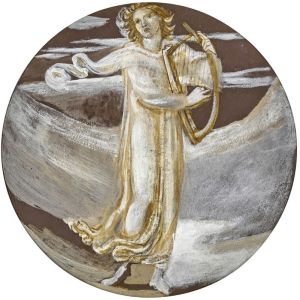
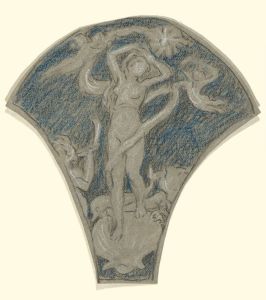
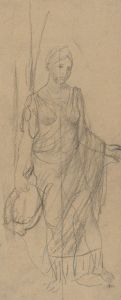
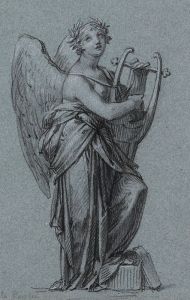

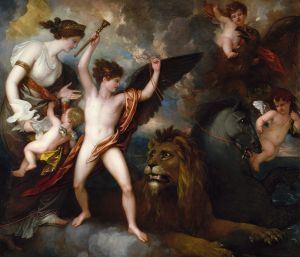
![Where There’s a Will There’s a Way [A Way of Flying]](/imgs/264671/s/francisco-de-goya-where-theres-a-will-theres-a-way-a-way-of-flying-fb3fa35a.jpg)
